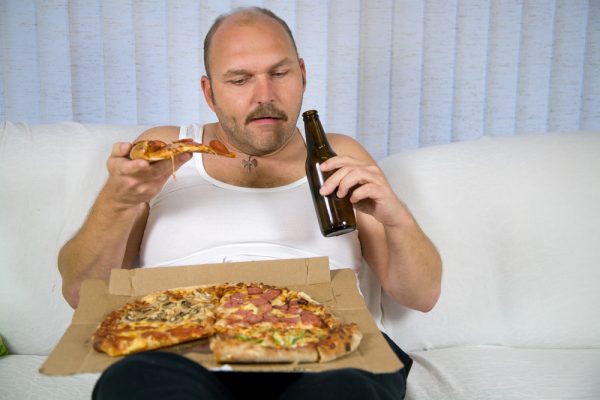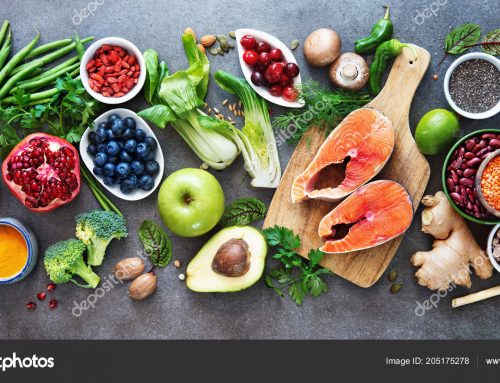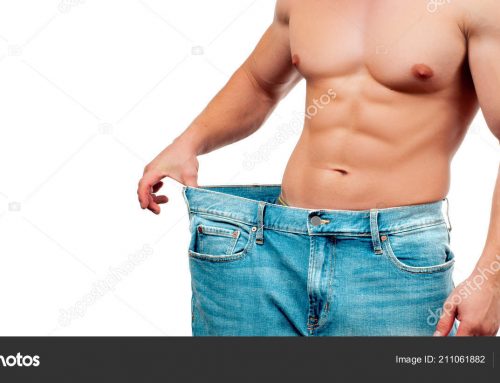Are you struggling to get rid of your beer belly?
I know, I know. Pizza just isn’t as good without a cold can of brew. Nor is a slab of barbecue, a platter of nachos, a helping of buffalo wings .… The list goes on. Parties, cookouts and Friday night with the guys just isn’t as fun without a few mugs.
But what price do we pay for guzzling and binging each time we hang out with the buds? If we knew the bigger problems brought on by constant beer-drinking, we’d probably re-think the habit.
If you’ve ever been called “The Man with the Beer Belly” – or are a strong candidate – you know the hassles a pot belly brings. Carrying that huge, heavy paunch in front of you, having difficulty moving, struggling to button a shirt or zip up your pants. You probably can’t reach your toes, much less see them. And, if you’re anywhere near the age of 50, you’re likely feeling pain in some joints already.
A hefty belly doesn’t just pose wardrobe, mobility, and pain problems, either. It can be a confidence killer for men. And women. Bulging, unsightly belly fat makes you look unappealing to others, especially a significant other. Which, ultimately, will affect the way you feel about yourself.

Why the beer belly?
Let’s be clear. A beer belly is not the kind of soft, flabby “love handles” lining your waist. It’s the hard, protruding mound in your midsection, where you’d find your belly-button sitting smack in the middle of.
It’s caused by an accumulation of fat in the visceral regions, that part of the gut that lies underneath the abdominal muscles.
Visceral is different from subcutaneous fat, which is soft and jiggly and lies just under the skin. You can grasp that with your hands. Visceral fat is hard, nestled deep within the abdominal cavity, and wraps itself around your organs. It can’t be pinched.
Considering that an average 12-ounce beer packs anywhere from 150 to 350 grams of calories, consuming several cans — along with all the other grub you devour with it — gives you ridiculous amounts of carbohydrates your body just doesn’t need. You certainly won’t be burning them through the night as you sleep and, chances are, you won’t be losing them in the next few days, either.
According to the Mayo Clinic, we burn an average of only 400-600 calories doing an hour’s worth of vigorous exercise like running, swimming or aerobics. Estimate the calories you consume with every can of beer, plus all the ones in the rich, fatty food you wolf down with it — and you’d be hard-pressed to count the additional hours (and days) you’ll need to be on the treadmill, at the pool or in the gym to burn it all off.
Habitual overeating, eating the wrong kinds of foods, and not getting enough exercise easily result in a humongous beer belly.
Age is a contributing factor, too. We are less active in our 30s, our metabolism slows down near our 40s, and the hormones that maintain our muscle mass dwindles by the time we’re 50. That’s why the “middle-aged spread” is called that.
For men, waistlines that measure 40 inches (102 cm) and above already qualify as abdominal obesity — the clinical term for beer belly. It’s a sign that we’ve stored way too much fat in the gut, which poses huge health risks in the long term.
The Health Hazards a Beer Belly Brings
Numerous studies show that abdominal obesity increases the risk of developing heart disease, stroke, Type 2 diabetes and some types of cancer.
Those are the more well-known dangers. Other health issues linked to excess belly fat are sleep apnea, depression, inflammation and liver disease. Harvard Medical School is very particular about abdominal fat increasing people’s risk of developing Alzheimer’s disease or another type of dementia.
According to Jean-Pierre Despres, Ph.D., a professor of human nutrition at Laval University in Quebec, having a “spare tire” in your belly is like carrying a ticking time bomb. “It’s worse than smoking or having high cholesterol,” he says.
The good news is, compared to subcutaneous fat, visceral fat has a much higher blood supply and is therefore easier to metabolize for energy and burn through exercise.
X Tips to Get Rid of Your Beer Belly
You don’t have to be that “man with the beer belly” anymore. Follow these protocols and lose both the unwanted tummy fat and the unwanted title.

Exercise regularly. Perhaps no other fix is faster and more effective than regular heart-pumping exercises. Those are the kinds of activities that make you hot, sweaty and pant a lot.
Strength training helps, too. Lifting weights builds muscle, and muscle burns more calories at rest than some other tissues, including fat.
And have you heard of ‘fasted cardio’? It’s doing aerobic workouts on an empty stomach. When you do strenuous exercise without any carb-based fuel inside your tummy, your body will use the stored fat in the gut instead.
It goes without saying that you’ll have to ditch the sedentary lifestyle. According to Harvard University, the starting point for controlling weight and losing abdominal fat is regular physical activity. This means moving more throughout the day, doing moderate-intensity tasks for anywhere from 30 to 60 minutes each day. Activeness is so important that when combined with structured exercises, it may be even more helpful than diet.
So, stay on your toes as much as you can. Walk the dog. Use the stairs, not the elevator. Pedal instead of drive.
Fast intermittently. Modify your eating cycle to include periodic fasts throughout the day or week. Choose between 16-hour fasts and 8-hour feeds (also called “The Leangains Protocol”, which is the easiest); 20-hour fasts/4-hour feeds (The Warrior Diet); or 23-hour fasts/1 large meal (The “One Meal A Day” or OMAD).
If you have the physical and mental mettle, you can try fasting a full 24 hours once or twice a week (The “Eat-Stop-Eat”), or eating normally for 5 days and consuming only 500-600 calories for 2 days (The “5:2 Diet”).
By eating fewer meals each week, intermittent fasting can change your hormone levels and increase your metabolic rate, helping you burn more calories and lose weight. It also encourages the release of the fat-burning hormone noradrenaline.
Cut the simple carbs. Unless you’re on a Keto diet, you may still be relying on carbohydrates as your primary source of energy. That’s fine, as long as you go for the complex type. Vegetables, fruits, nuts, beans, seeds and sweet potatoes are all good. So are whole grains like oats, spelt, millet, quinoa, and barley. But you’ll definitely have to stay away from white breads, white pasta, and white rice — any grain that has been substantially refined and bereft of most of its nutrients.
Avoid simple sugar in all of its forms: white, brown, corn syrup, glucose, fruit juice concentrate. Steer clear of soda, iced tea, baked treats, boxed cereal, and sugar-laden snacks and desserts.
Limit the calories. Make it your goal to reach a calorie deficit, which is consuming fewer calories than your body uses. You can do this in several ways.
Eat home-cooked rather than fast food or take-outs, which are notorious for having copious amounts of fat, salt and sugar. Prepare meals using ingredients closer to their natural state rather than highly processed. Lean protein, fresh vegetables and fruits, legumes and nuts will not only nourish you better, but their high fiber content will also keep you feeling fuller, longer — preventing you from craving for a snack in between meals.
Also, opt for healthier fats like olive, avocado and coconut oil. And ease up on the bacon and butter!
Finally, cut down on sweet beverages like fruit juices, milk teas, shakes and coffee drinks which all tend to have added sugars.
Drink plenty of water. According to Medical News Today, water is a natural appetite suppressant. When the stomach is full, it sends signals to the brain telling it to stop eating. Water can fill up the empty space in your gut, causing you to feel full and reducing the longing to eat something. Make it a habit to drink a glass of water before each meal.
And not only does water flush out waste and toxins from your body, it actually aids in weight loss. It speeds up your metabolism and increases the amount of calories you burn.
Stay well hydrated. Water is essential for burning off fat from the food you eat, as well as the stored fat inside your beer belly.
Consume green tea. The antioxidant catechin in green tea, called epigallocatechin gallate (EGCG), aids in weight loss by boosting your metabolism. It also boosts the fat-burning hormone noradrenaline, while helping increase norepinephrine — the hormone that’s responsible for promoting fat breakdown.
Green tea is one of the healthiest beverages on the planet. Drinking it regularly will yield a host of benefits — from promoting heart and bone health to preventing diabetes and aging. Although its fat-burning capacity may be minimal compared to those above, every bit helps. Try drinking 3 to 4 cups daily.
Set micro-goals. Setting small, realistic targets will prevent you from feeling overwhelmed and discouraged in your beer belly-busting project. Break down your long-term goals into tiny increments: eat X fewer calories per day, drink X fewer cans per week, gain X fewer pounds per month. Then take those mini, doable steps one at a time.
Taking micro-steps, or minute actions that move you just a little bit closer to your goal, takes a lot of pressure off of your mind. And its power lies in the ease and painlessness of attaining them.
As you achieve each and every micro-goal, consider it a huge win. Eventually, each win will set you on a steady but sure path to meeting your ultimate objective — a flat belly.
Conclusion
Getting rid of your beer belly involves taking multiple steps that combine regular exercise, dietary, lifestyle, attitude and goat-setting adjustments. Knowing how you became the “Beer belly Man”, understanding the problems associated with it, and taking small but realistic steps to resolve it will get you on track to having a flatter tummy in no time.

